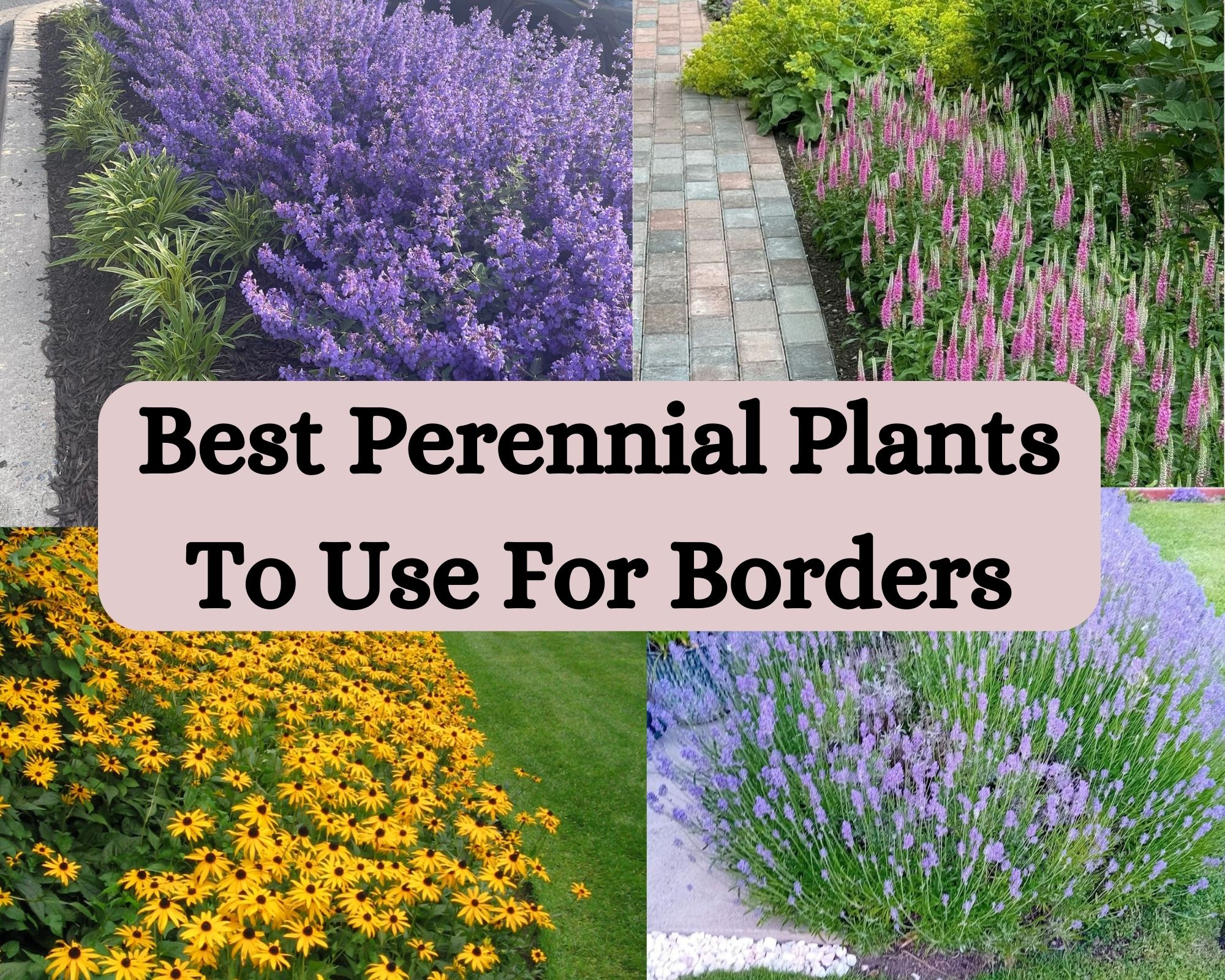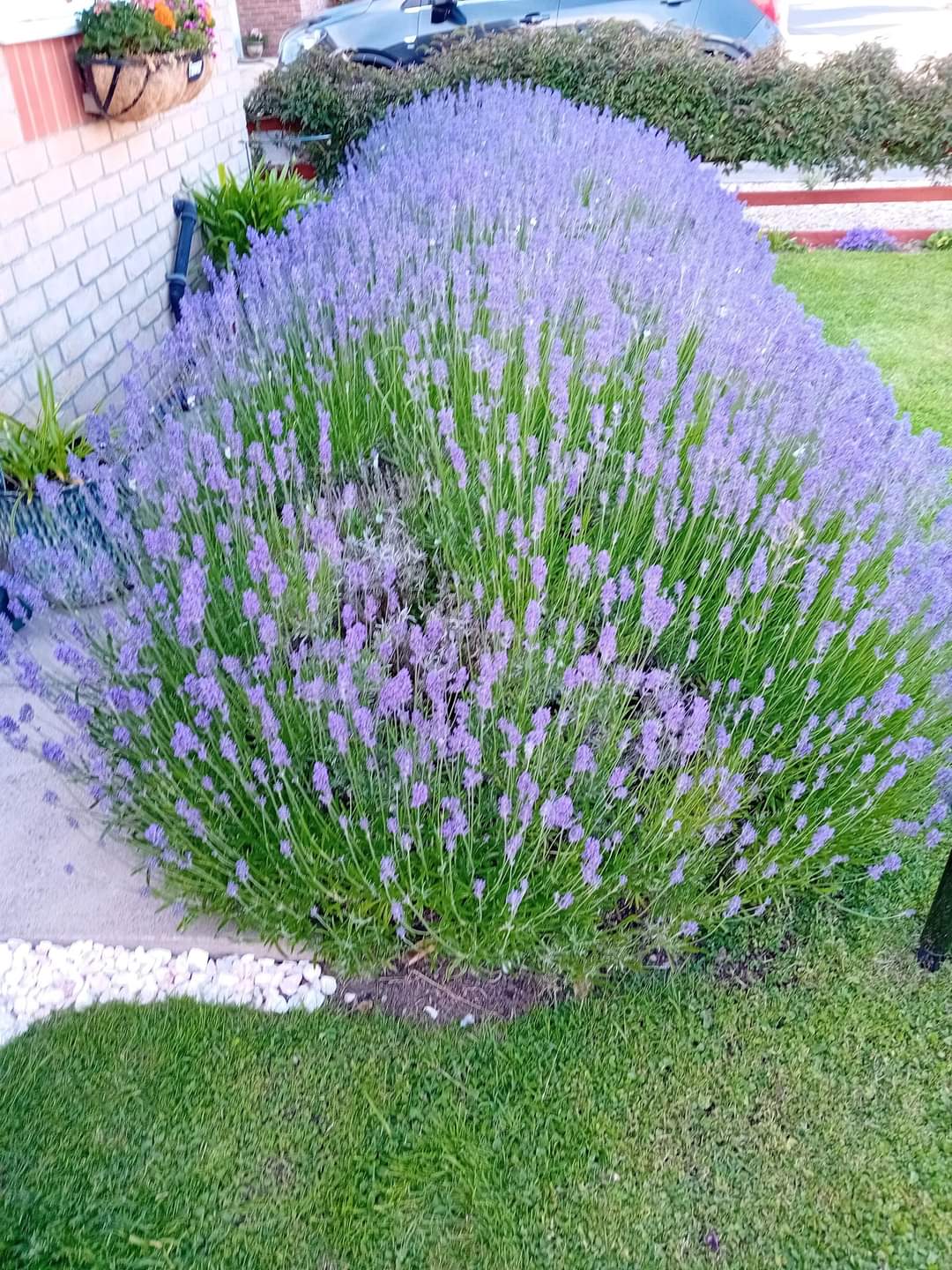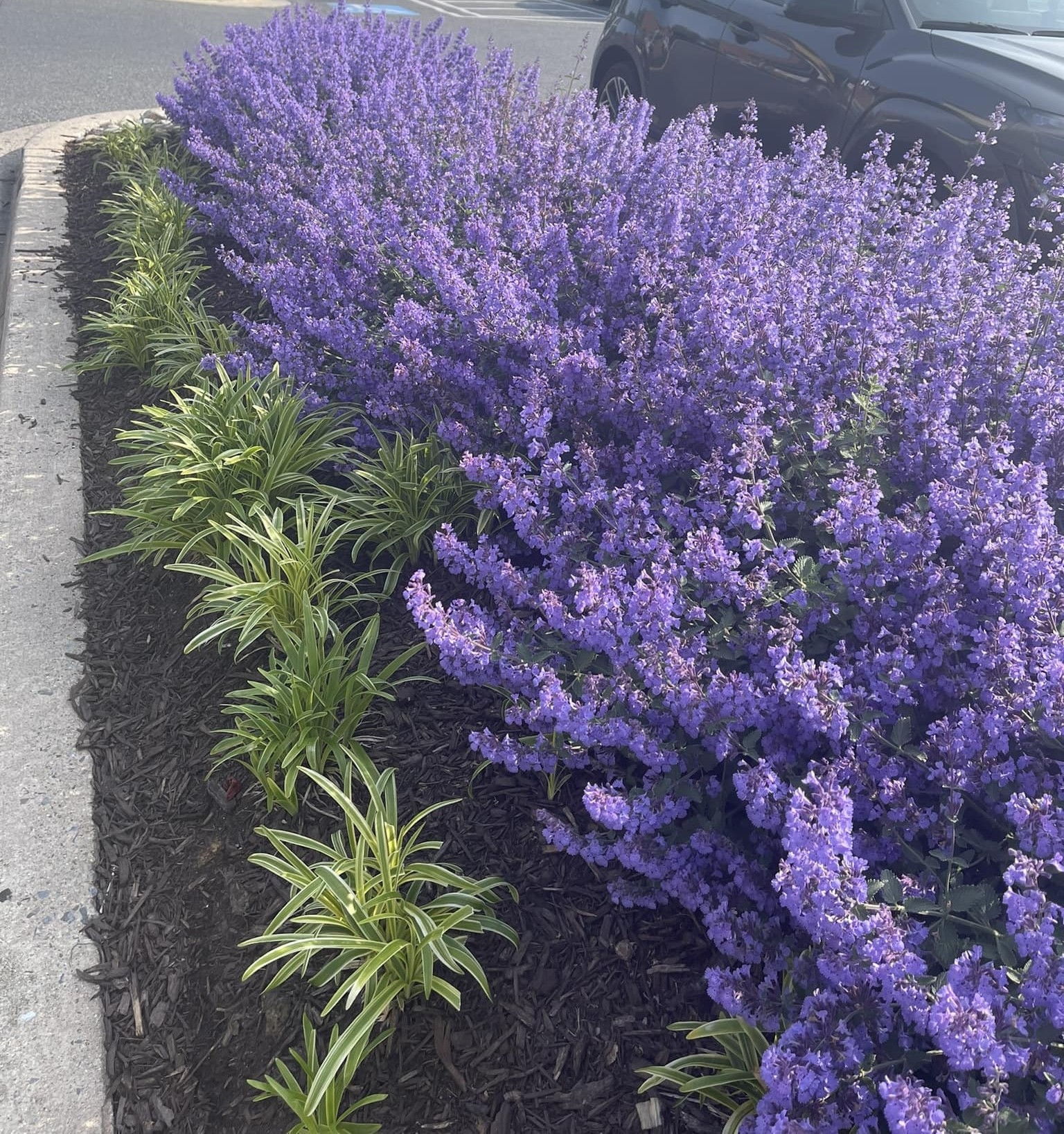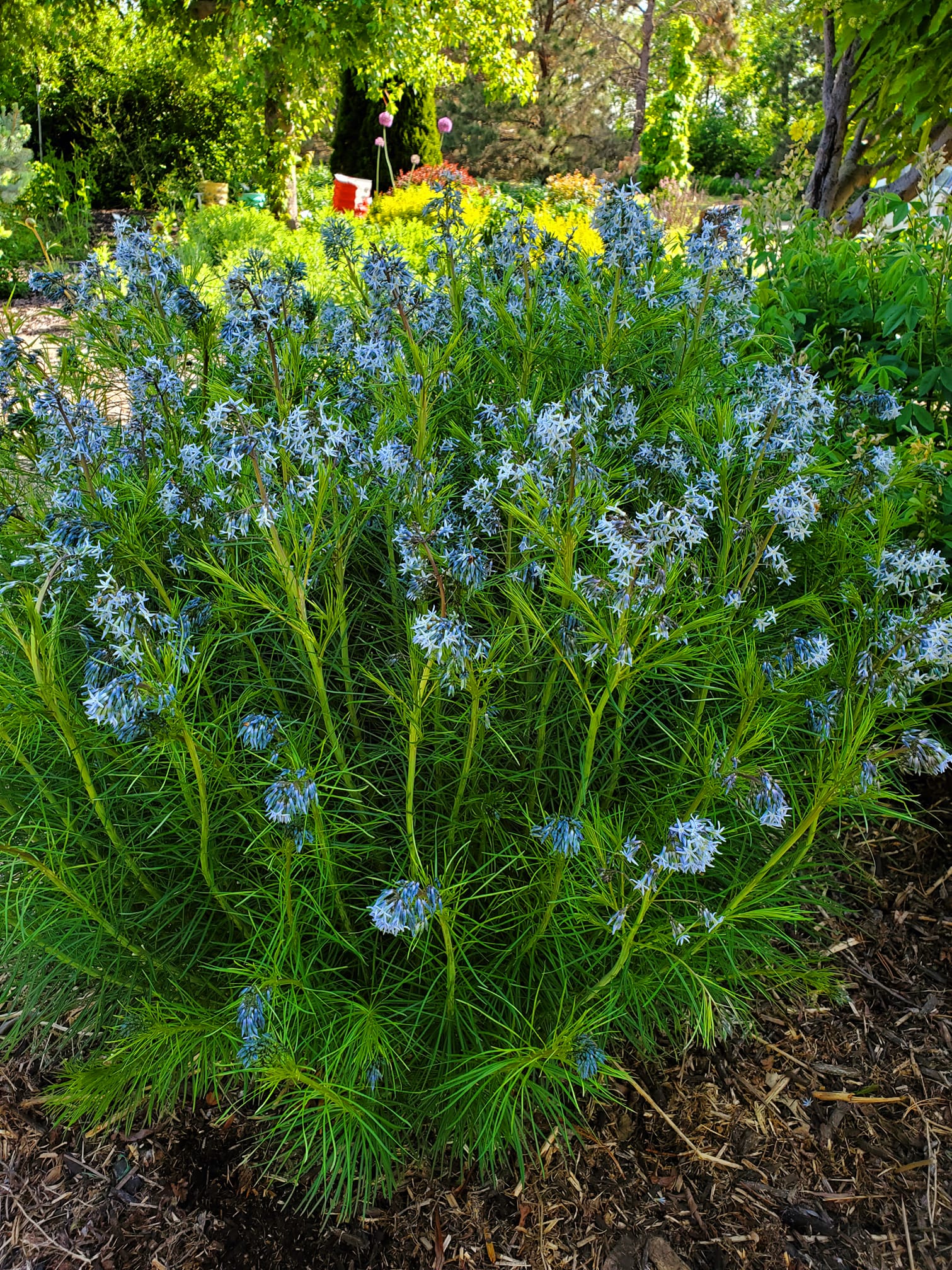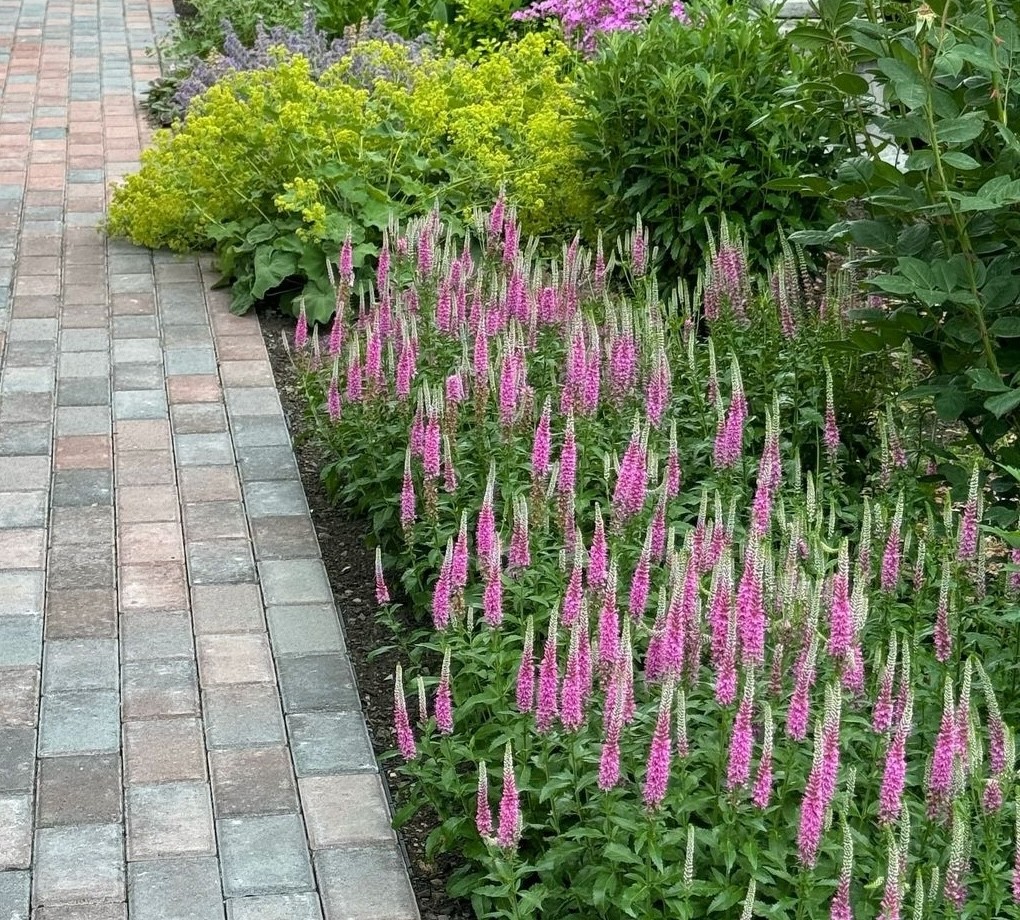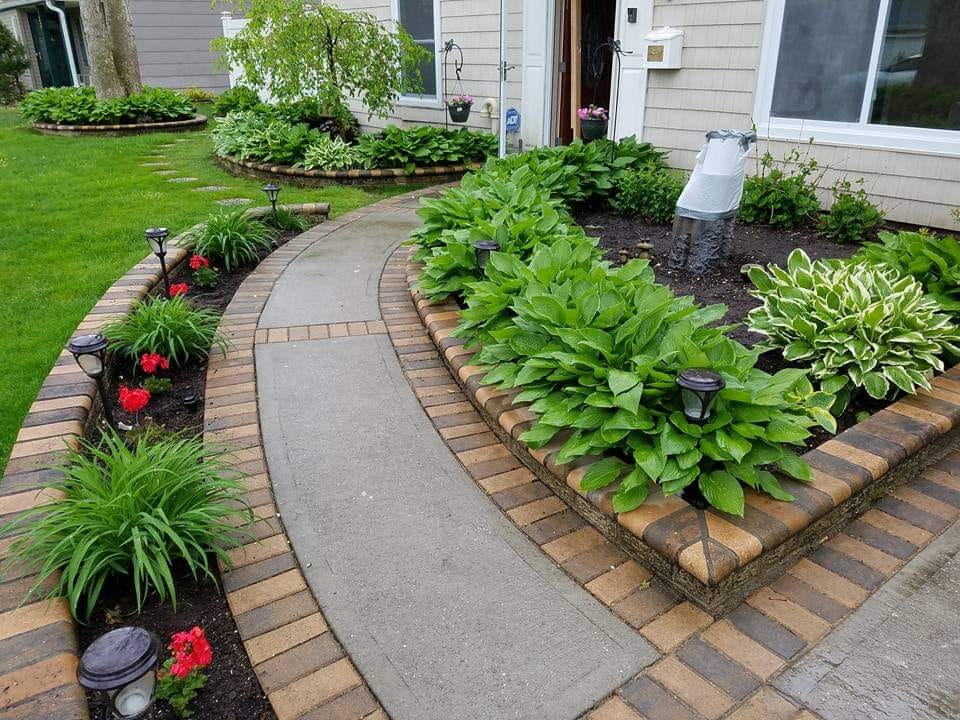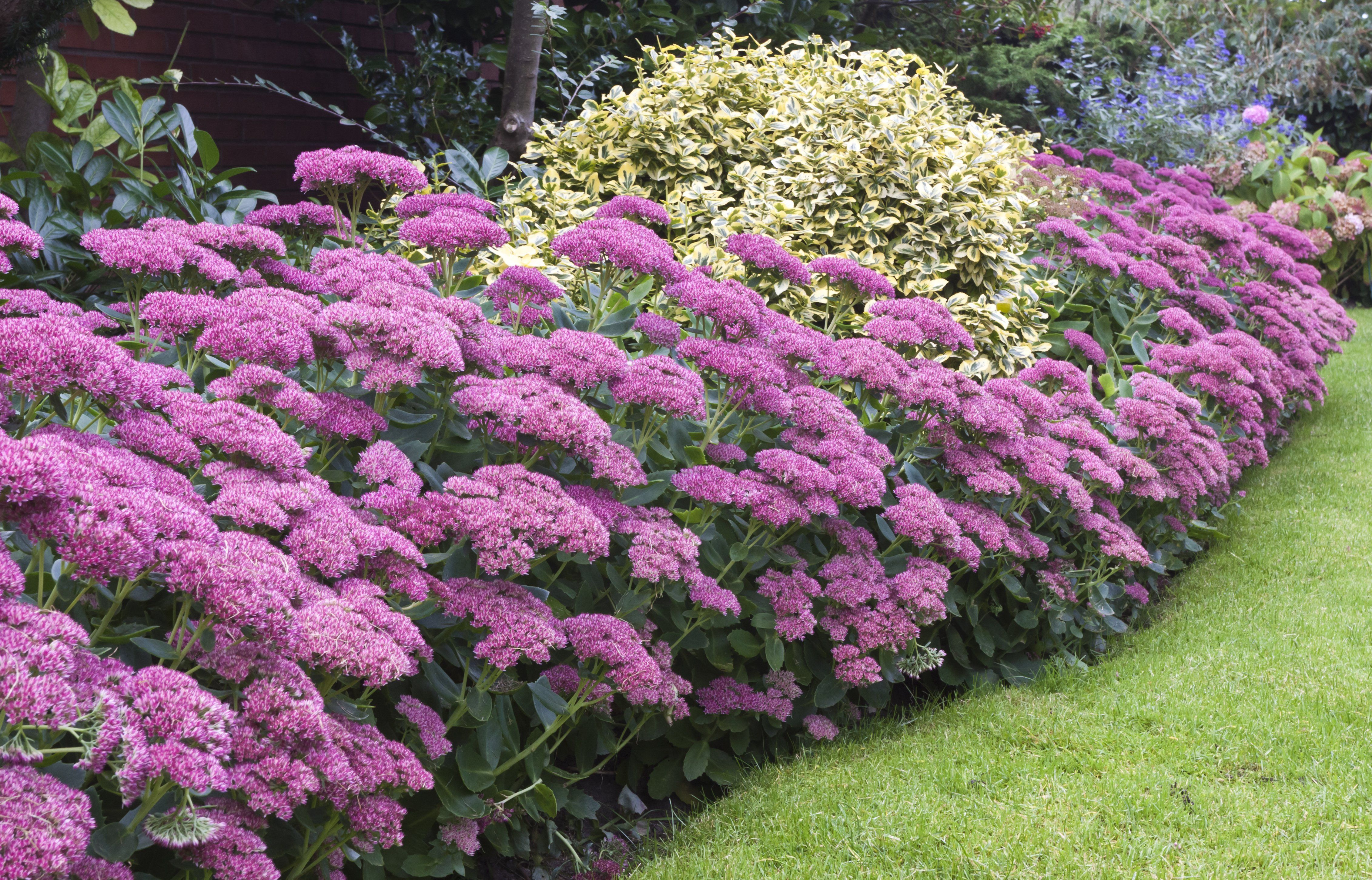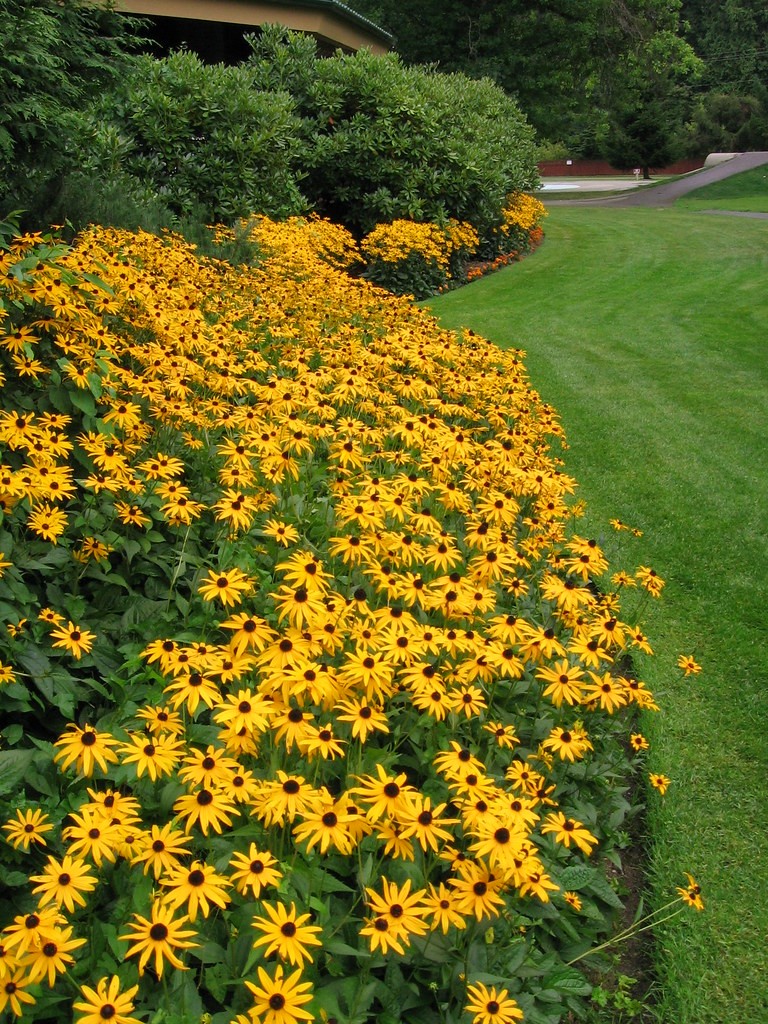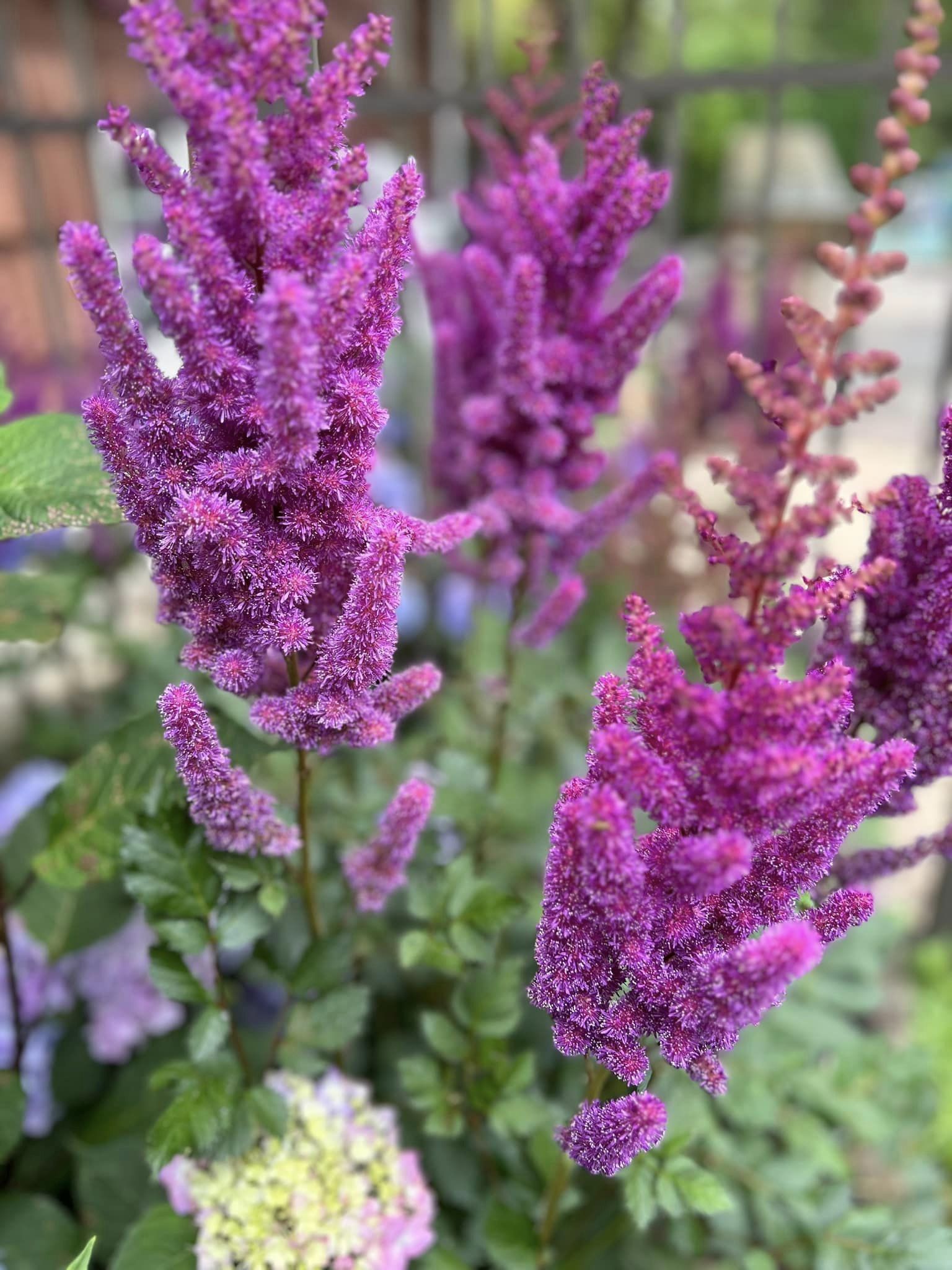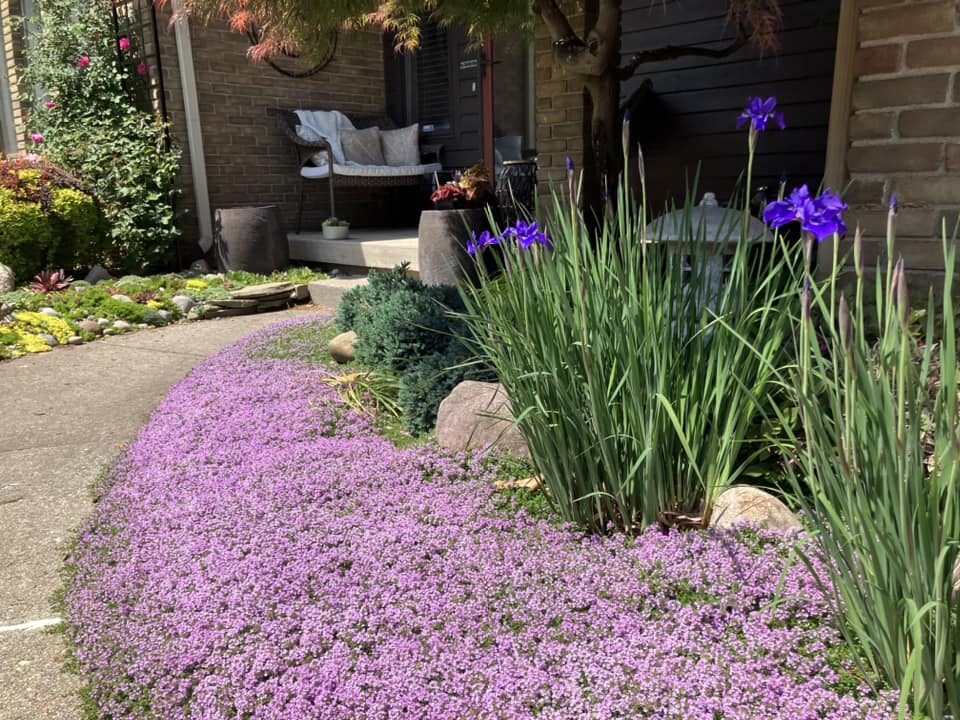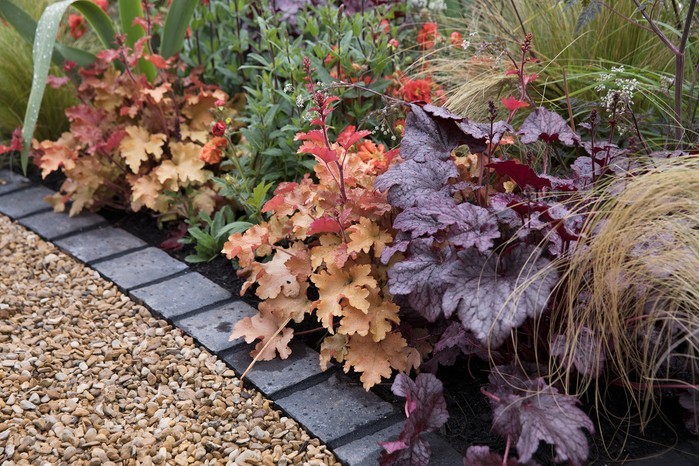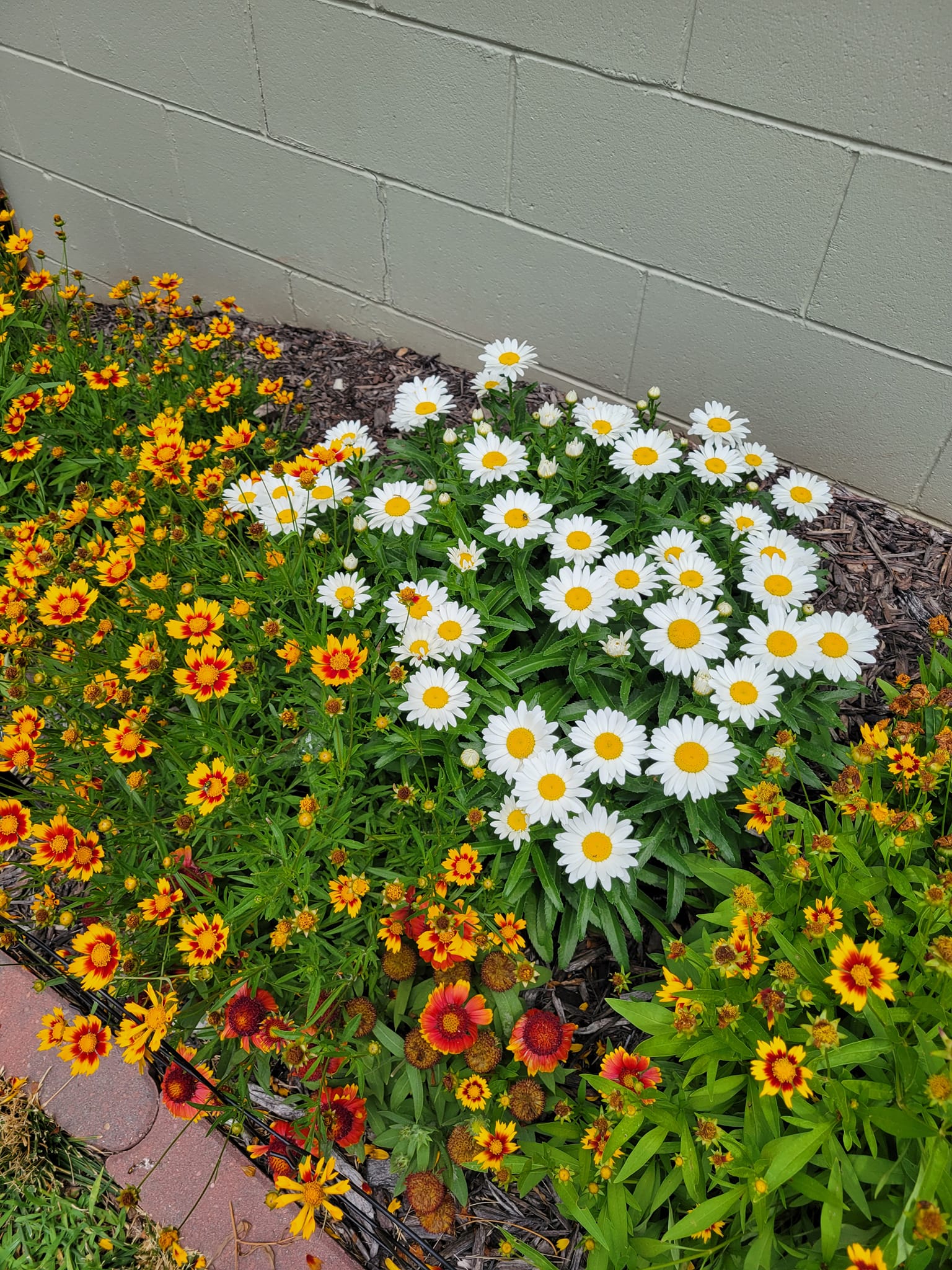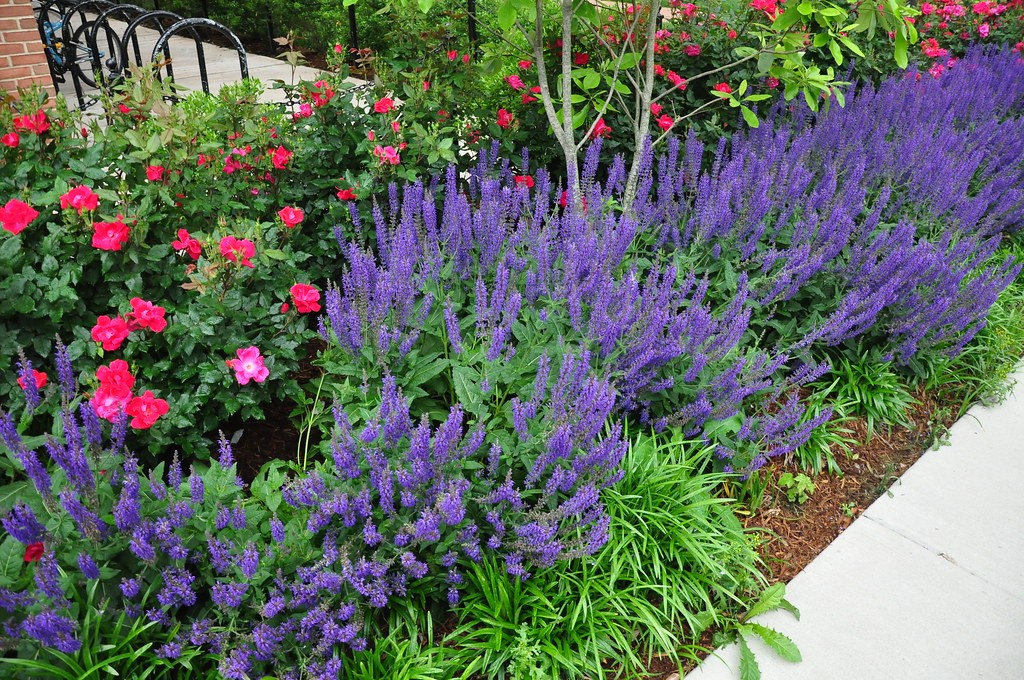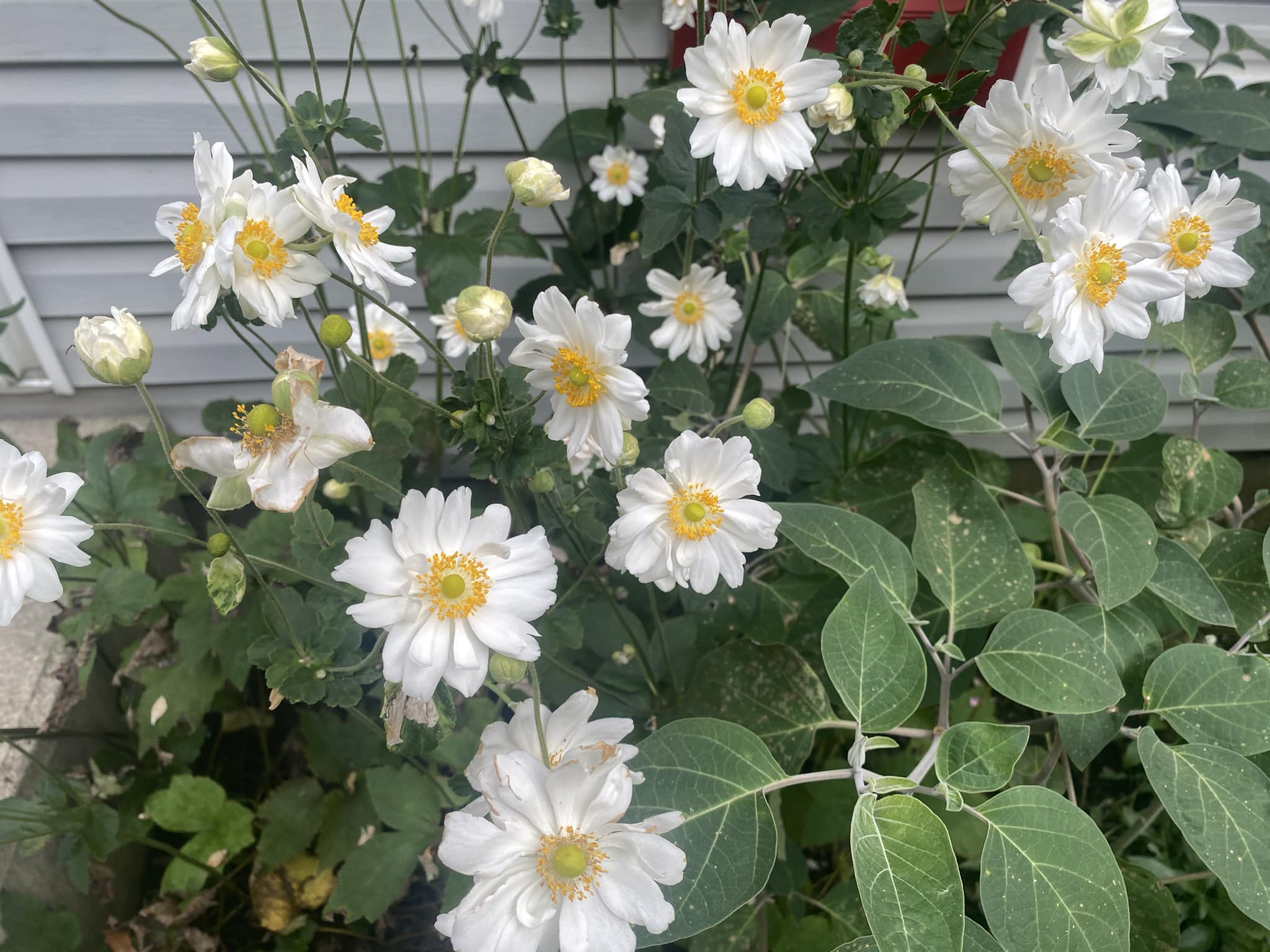Defining your garden borders with perennials is a fantastic choice. With these plants, you can create a cohesive and polished look, making the entire garden or yard appear more intentional and well-maintained.
Border plants provide a natural edge that guides the eye and a seamless transition between the lawn, pathways, and garden beds, enhancing your outdoor visual appeal. While fast-growing annuals can make excellent border plants, perennials are better options.
Perennials live for over two years, offering reliability, longevity, and lasting beauty with less maintenance. Here, we’ll explore some of the best perennial plants for borders.
15 Best Perennial Plants To Use For Borders
1. Lavender
Lavender is a classic perennial that is our top choice for borders. Growing between 1 to 3 feet tall and spreading about as wide, lavender forms a rounded, bushy shape that works well as a border plant, providing a soft, cohesive edge to garden beds and pathways.
Plant lavender in neat rows along garden paths or as a low hedge for a classic and formal look. Its growth habit’s uniformity and the consistency of its foliage and flowers create a clean, elegant edge. Alternatively, pair it with others in a mixed border.
Hardiness zones: 5-9
2. Catmint
This hardy perennial with soft, aromatic, gray-green leaves blooms for weeks on end, mesmerizing with small, tubular flowers that come in shades of blue, lavender, pink, or white. Many varieties will rebloom if you cut back after the initial flowering.
As a border plant, you can grow catmint along the edges of borders for a soft, flowing edge or, among other border plants, for continuous interest. The ‘Six Hills Giant’ variety is excellent for adding height and structure to borders, while ‘Blue Wonder’ suits the front of borders.
Hardiness zones: 3-8
Read More:
- Fence Edging Ideas to Upgrade Your Yard
- Cheap Lawn Edging Ideas On A Budget
- Low-Maintenance Full Sun Perennials For Front Yard
- Beautiful Corner Garden Ideas to Brighten Your Yard
3. Hubricht’s Bluestar
For something unexpected in your border, consider Hubricht’s Bluestar. This visually appealing perennial stands out for its delicate blue flowers that create a soft, soothing effect. Moreover, its golden fall color adds a spectacular seasonal display, while its fine-textured foliage gives other plants an attractive backdrop.
For large borders, plant this perennial in groups to create a mass of delicate blue flowers in spring and a striking golden display in fall. You can also pair Hubricht’s Bluestar with other perennials and ornamental grasses in mixed borders.
Hardiness zones: 5-8
4. Veronica
You can count on Veronica to return year after year, ensuring you have visually appealing borders. This perennial is an interesting, versatile addition to gardens. It comes in multiple color varieties and has a long blooming period.
Veronica exhibits a neat growth habit and attractive foliage. Veronica is suitable for both front-of-the-border and mid-border plantings.
If you want a beautiful variety to fill your borders with vivid magenta flowers, grow the Beeline Petite Pink Veronica. Incorporate Veronica into your border design to form a dynamic, visually appealing space.
Hardiness zones: 4-10
5. Hosta
Add texture and depth to your garden borders using this shade-loving perennial with large, often variegated leaves. Hostas are perfect for shaded pathways as they flourish in places where many other plants struggle.
You can be creative with hostas, forming different designs, from bold statement plantings to subtle ground covers. This is made possible by its diversity in sizes and colors. Line garden paths or define borders with smaller hosta varieties that form a tidy growth and attractive, neat, polished look.
Hostas are relatively low-maintenance but protect them from slugs and snails.
Hardiness zones: 3-9
6. Sedum
To keep your borders colorful late in the season, you need the right plants. Sedum is one such plant. This succulent perennial’s thick, fleshy leaves come in a variety of colors and produce white, yellow, pink, and red star-shaped flowers.
Sedum colors change throughout the seasons, keeping your borders interesting, especially with dramatic fall hues. You can plant upright sedum varieties as focal points in mixed borders. Pair them with other perennials with contrasting foliage and flower shapes.
In contrast, fill the gaps along your pathways with low-growing varieties.
Hardiness zones: 3-10
7. Black-Eyed Susan
This is among the most cheerful plants you can add to your borders. Black-Eyed Susans are recognized by their daisy-like flowers, featuring bright yellow or golden petals encircling a dark brown or black central cone.
These bright flowers complement other perennials and annuals, making black-eyed susans ideal for mixed borders. The Goldsturm variety is especially great for borders because of its tidy growth habit and reliable, prolific flowering.
Consider cutting back your black-eyed susans in late fall or early spring to prepare for next season’s new growth.
Hardiness zones: 3-9
8. Astilbe
Shade-tolerant and moisture-loving, Astilbes are perfect for borders near water features or damp woodland settings. This perennial gives borders a soft, airy texture due to its feathery plumes rising above the fern-like foliage.
Astilbes grow between 1-3 feet high, allowing them to effectively fill the mid-ground of borders, providing a transition between taller and shorter plants. Try the Purple Candles variety if you want something for the back of the border.
This perennial’s deeply cut foliage remains attractive throughout the growing season.
Hardiness zones: 4-9
9. Peonies
Capable of thriving for decades, this long-lasting perennial adds texture and beauty to borders owing to its large, single, semi-double, or fully double, vibrant flowers. Peonies also offer lush, green, attractive foliage.
In fall, their leaves often turn shades of red and gold, adding seasonal interest. Combine peonies with other perennials to give your borders a cottage garden-like border. You can also use them in symmetrical, formal borders alongside boxwood hedges or other evergreen shrubs.
Herbaceous peonies are more suited for borders than tree peonies.
Hardiness zones: 3-8
10. Creeping Thyme
Fill the gaps along your garden borders with this low-growing perennial with a prostrate, mat-forming growth habit. Creeping thyme is suitable for edging garden paths, especially those covered with tiny purple, lavender, or pink flowers.
Grow ‘Red Creeping Thyme,’ which is a vigorous grower on your borders, to make the place colorful. On the other hand, add ‘Pink Chintz,’ which has soft pink flowers and fuzzy, green foliage for a touch of delicate color.
‘Magic Carpet’ that exhibits a dense, low-growing habit makes it perfect for edging.
Hardiness zones: 5-8
11. Coral Bells
Grow coral bells in your borders for a rich tapestry of color and texture. Its standout feature is its striking foliage in a wide range of colors, including deep burgundy, purple, lime green, caramel, and silver. Coral bells suit the front or middle of garden borders since they grow 8-18 inches tall, and flower spikes reach 2 feet.
As shade-loving plants, coral bells are perfect for shaded or partially shaded borders where their foliage can add color and texture. Soften the edges of garden borders or line pathways using low-growing varieties.
Hardiness zones: 3-9
12. Coreopsis
This hardy perennial is a real beauty. Its bright yellow daisy-like flowers, which are also found in shades of pink, red, orange, and bi-colored varieties, will effortlessly brighten your borders from from late spring through fall.
Consider coreopsis for your garden’s front and middle parts as it reaches 1 to 4 feet and spreads about 1 to 2 feet wide. Plant Coreopsis in large groups or drifts, in your mixed perennial borders, or along edges and pathways.
Hardiness zones: 4-9
13. Salvia
Salvia’s long blooming period, tidy growth habit, and ability to attract pollinators make it an excellent choice for borders. If you use salvia as a sole border plant, use taller salvias at the back of the border and shorter ones at the front to create layers and depth.
Also, pair them with lower-growing perennials or ground covers to fill gaps. If you mix salvias with other plants, choose complementary or contrasting colors.
Plant salvias in sunny borders with well-drained soil and water newly planted salvias regularly until they are established.
Hardiness zones: 5-9
14. Japanese Anemone
Bring late-season color to your borders by incorporating Japanese anemones into these spaces. Its delicate, saucer-shaped flowers in shades of pink and white are borne on tall, slender stems. Since Japanese anemones can tolerate partial shade, these plants can help brighten shaded borders.
Plant Japanese anemones about 18-24 inches apart. With their heights reaching 2-4 feet tall, choose them for the middle or back of the border. Popular varieties to consider are ‘Honorine Jobert,’ ‘September Charm,’ and ‘Robustissima.’
Hardiness zones: 4-8
15. Yarrow
Lastly is the yarrow, a versatile perennial with vibrant flowers, a long blooming period, and attractive foliage. You can create a balanced border design by choosing yarrow varieties that suit your garden, from dwarf types to taller cultivars.
Go for this plant if you desire texture in your borders. Yarrow has finely divided, fern-like foliage and flat-topped, tightly packed flower clusters. Deadhead yarrows and divide clumps every few years.
Yarrow suits your garden if deer and rabbits are a problem since these animals find the plant unpalatable.
Hardiness zones: 3-9
Final Remarks
A beautiful, dynamic border isn’t hard to achieve when multiple perennial plants are perfectly suited for borders. Each perennial suitable for borders offers unique qualities, from vibrant blooms and appealing colors to unique textures. Plan your design carefully, mixing different heights and textures for a visually appealing, harmonious display.

Hey there, I’m Derek Schew, a writer for Lawnholic.com, where we cover everything and anything related to lawns. As someone who’s spent countless hours tending to my own lawn, I’m passionate about sharing my knowledge and helping others achieve the perfect yard. From lawn care tips to product reviews, I’m committed to providing our readers with the most accurate and up-to-date information available. So whether you’re a seasoned lawn enthusiast or just getting started, I invite you to join our community and discover the joys of a lush, green lawn.

